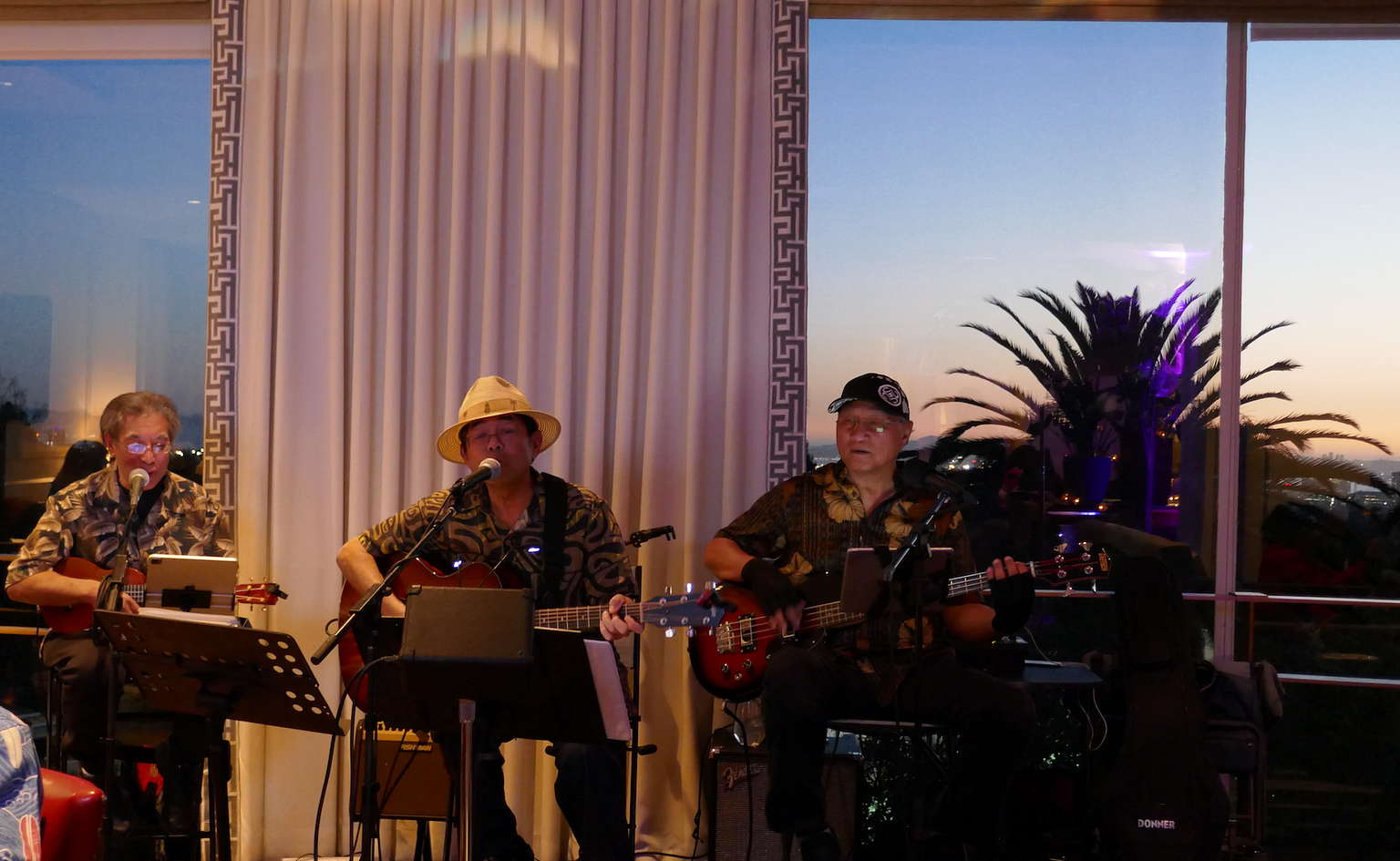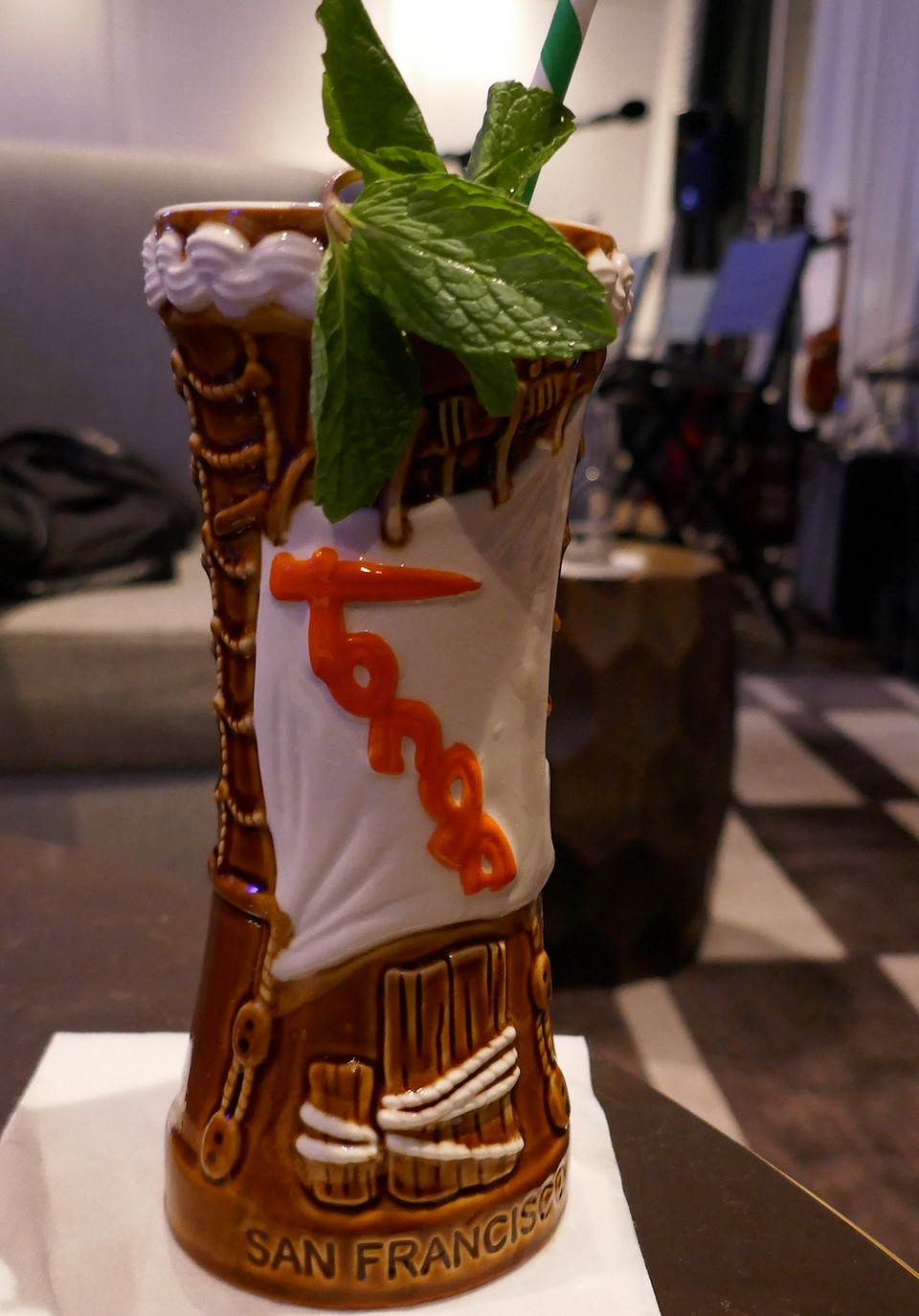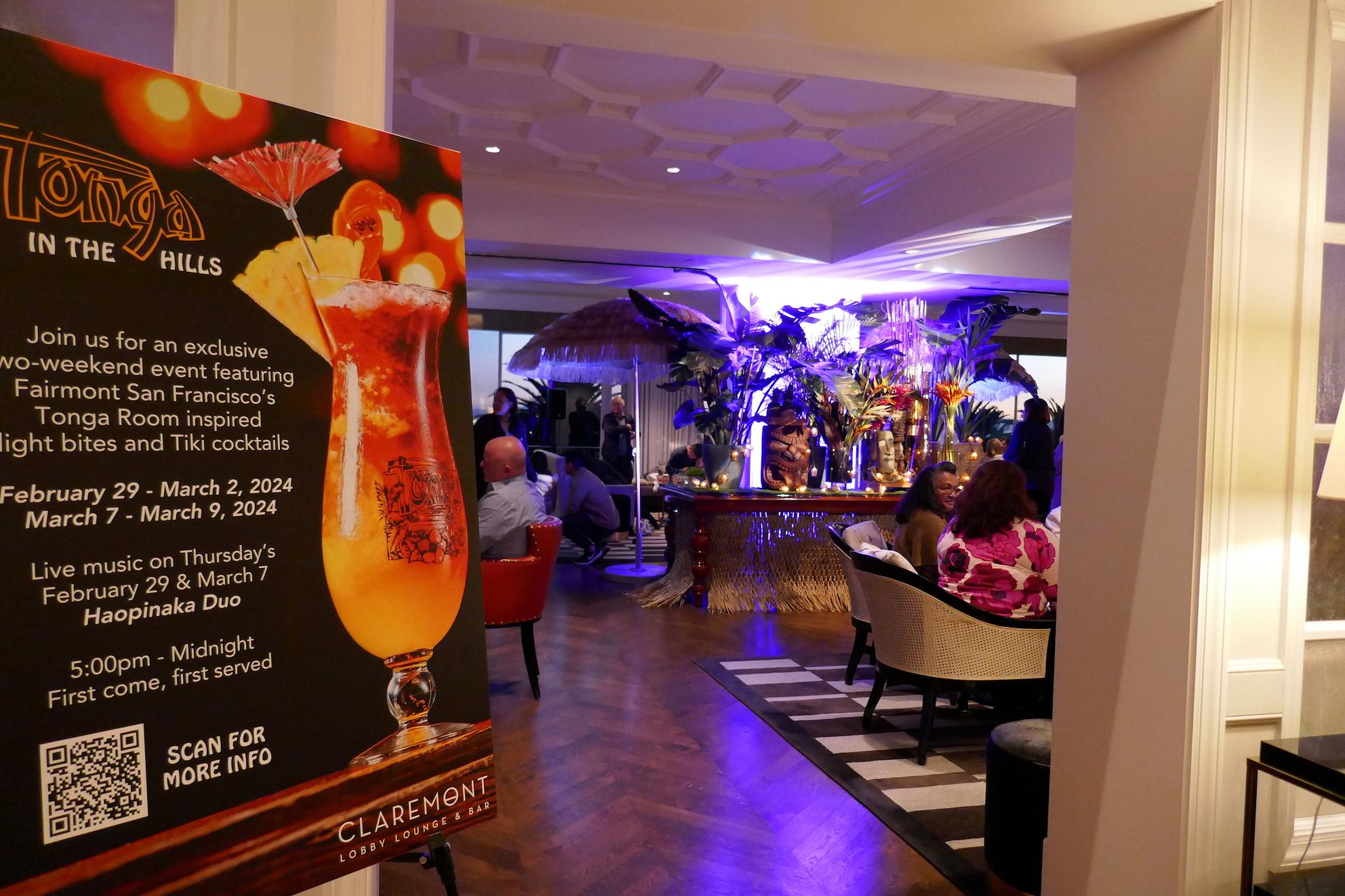Tonga in the Hills
The Lobby Bar at Claremont Club & Spa
Oakland
March 7, 2024
In the Lobby Bar at the storied Claremont Hotel in the Oakland Hills, my friends pushed me to a makeshift dancefloor. “This woman knows the hula!” my friend shouted as a Hawaiian band, Haopinaka, played next to me, right in front of the real-life backdrop of palm trees framing our sunset view of the bay. I was meant to join a woman demonstrating a Hawaiian hula dance.
My first thought was, How the hell did this happen? And my immediate, second thought was, Oh well, I’ll try my best.
“Do you know the hula to this particular song?” the woman asked. I did not. The last time I performed a traditional hula was with a group of friends at my high school graduation dinner — many, many… many years ago. But I smiled and shrugged, saying I’d try to follow along.
I blame the drink. Now, the history of tiki bars in the U.S. is both legendary and problematic, but I admit that I’ve spent much of my American adulthood partaking in the pop culture phenomenon of mid-century revivalist escapism through the imbibing of tropical drinks amid island-themed paraphernalia. That is to say, I love drinking strong, fruit-based cocktails with tropical umbrellas in them, imagining I’m on a beach far away from my daily routine here in the Bay Area, where I engage in the daily commute on the struggle bus of living and working as a sometime writer. I don’t think you can blame me if I just want to get away, even if I don’t actually go anywhere. And since the Tonga Room, the legendary tropical-themed bar at the Fairmont Hotel in San Francisco, was doing a “Tonga in the Hills” event at the Claremont, I was game for another escape.
Fortuitously, my friends and I walked up to the Claremont entrance just as the sun was setting in the hills, framing a view of San Francisco in the distance. Like tourists in our own town, we all stopped to gawk and take pictures.
The Tonga Room at the Fairmont is traditionally overindulgent with its “tiki bar” vibe, but transporting that aesthetic would be challenging. The original Tonga Room features a faux lake in the center, with a band playing on a platform “boat” in the middle, accompanied by visual and sound effects mimicking thunder and lightning. I wasn’t expecting that at the Claremont. The Lobby Bar inside the hotel was modestly decorated for the event — some faux tropical shrubbery, a kitschy table display with lights, and a “Tiki Bar” sign above the bartenders, who wore Hawaiian-print shirts.
The large room was packed full of guests drinking from the Tonga Room’s original mugs, something they no longer do at the San Francisco location (people kept stealing them, my friend informed me). My friend brought a plastic lei for the occasion. She ended up giving it to the young daughter of a family sitting next to us.

Haopinaka, a local band that promises to “bring the spirit of aloha” to the Bay Area, had a full band set up against the windows overlooking the Bay. They played a set of gentle tunes inspired by more modern Hawaiian folk music, with Hawaiian guitar, ukulele, mellow percussion, and soft harmonies.
Their band name actually describes the three men who make up the group, in colloquial terms — ”hao-le (white guy), Pi-noy (Filipino guy), and ka-naka (Hawaiian guy).”
It was a fitting aural backdrop for the sunset and the island vibes, something as sweet and gentle as a tropical breeze, and similar to the dulcet sounds heard at the original Tonga Room. Not necessarily authentic Hawaiian music, but true to the “tiki bar” culture that proliferated in the States in the 1960s and in later iterations.
The dancer who joined the band for a few songs seemed to have been impromptu. She was barefoot, dressed in a simple white mini-dress rather than in traditional garb. But her hula dance did look to be the real thing; hula is a traditional Hawaiian dance created by native Hawaiians, a form of storytelling meant to accompany the music. It’s a visual dance form with mellifluous hand movements often coupled with slow, deliberate foot and hip movements sometimes meant to mimic nature, like swaying palm trees or gentle breezes, or to express emotions, like hope or sadness. After several sips of my strong cocktail, I was less than gentle and mellifluous. Actually, I was more like a softly buzzed bull in a china shop trying not to knock over the delicate dancer next to me. But some of the swaying hand and hip movements from my high school lessons came back to me. I still sat down quickly after the song ended, though.
When it comes to the problem of cultural appropriation and colonialist undertones, I feel conflicted. As a Filipina American, I find it problematic when people refer to my parents’ home country as “third-world” (a ranking and definition with its own problematic, imperialist tendencies). “Tiki” is a word denoting the first man in Māori mythology. It also refers to carved figures of gods or ancestors. Among other things, I support calling “tiki bars” “tropical bars” instead, and not mixing up true Polynesian culture with the American pop culture tradition of tropical-themed escapism, removing the kitschy relics.
As I sipped my cocktail (something sweet and tart, and maybe with rum?), I told my friends about a night spent drinking with college friends at Trader Sam’s in San Francisco — one photo at the beginning of the night showed four of us sharing a table-sized bowl of a fruity, red cocktail, and one photo at the end of the night showed an empty bowl, straws strewn all over the table, and four very drunk, laughing, semi-passed out friends, leaning all over each other as I gave the middle finger to the camera. At this point in my life, I mind my limits. I only ordered one drink.
Apparently it had been strong enough for me to join the hula dancer for that dance. As sobriety slowly crept in, I felt mild embarrassment as strangers and friends took photos of me dancing with the professional dancer. With the island vibes still mingling happily with the alcohol levels coursing through my body, it wasn’t enough for me to give up halfway through. But I did politely ignore the video evidence my friend sent me the next day.







